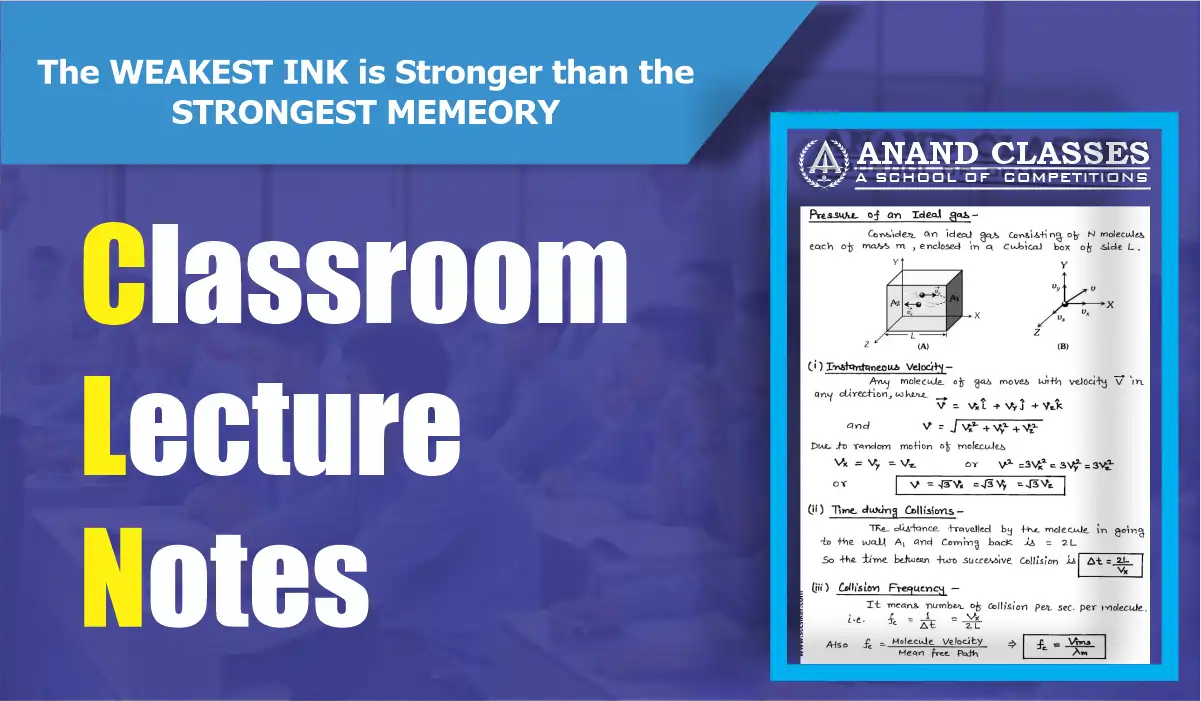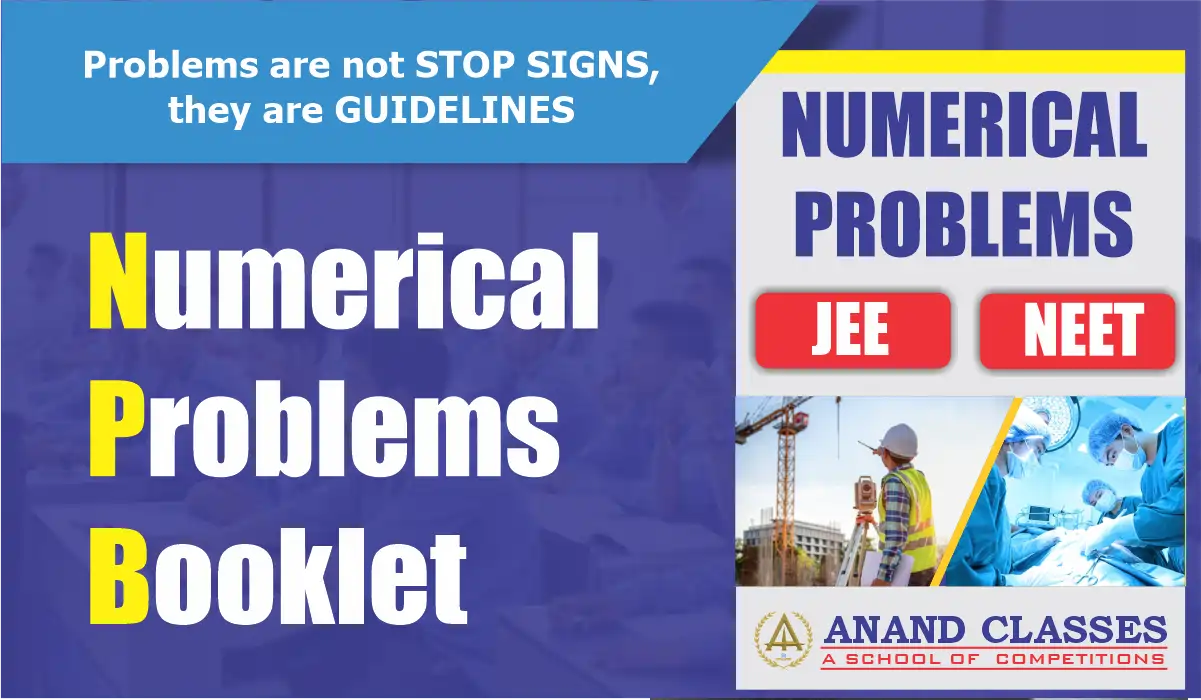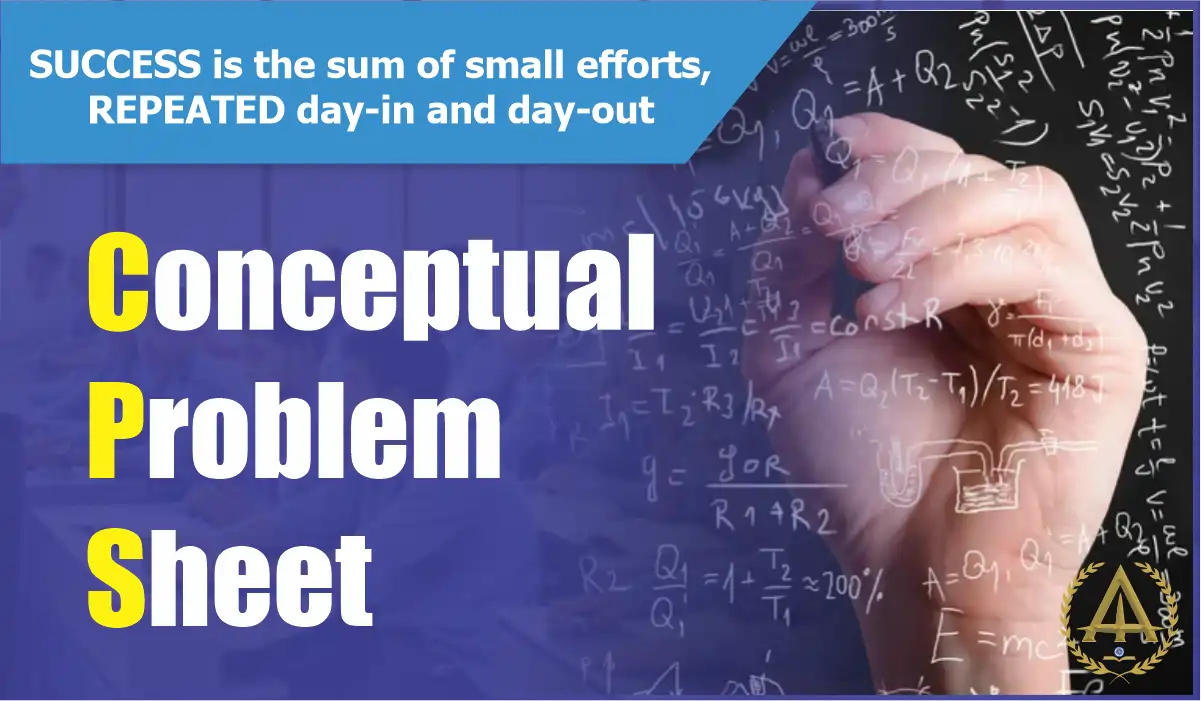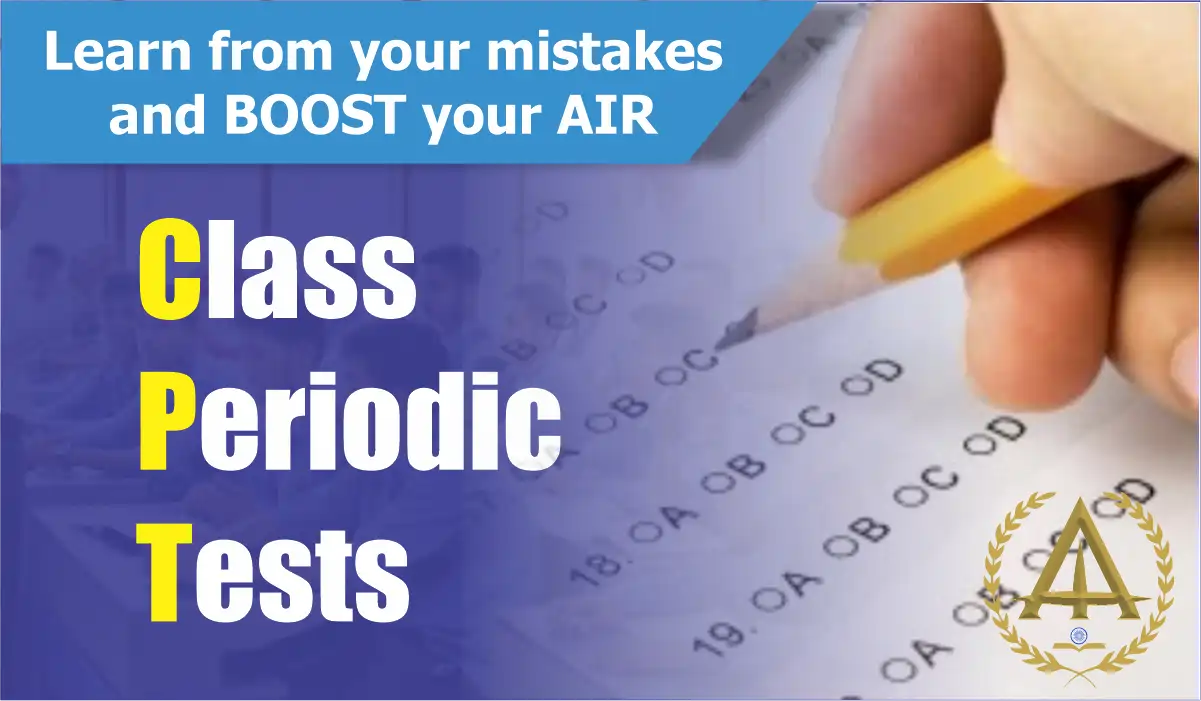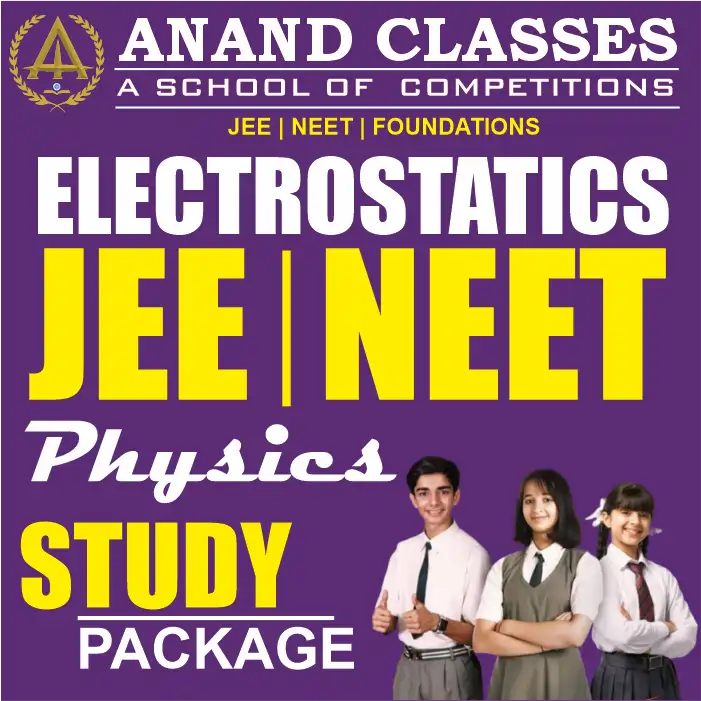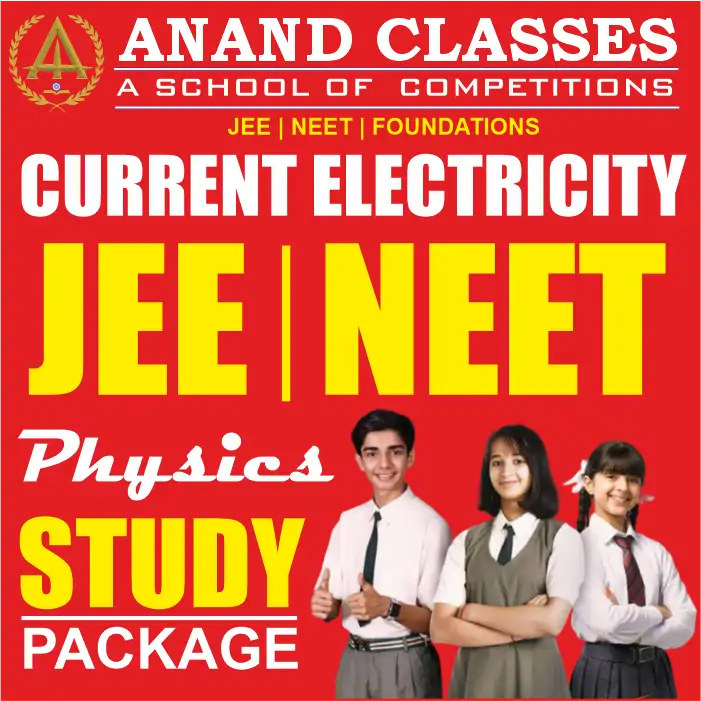Neeraj Anand-Electric Charge-Types-Properties-Electrification-Physics Class 12 Notes Study Material-Anand Classes
The Electric Charges is one of the important chapters of the Class 12th Physics. Students can easily cover the chapter with the help of the Electric Charges and Fields Class 12 notes. In the notes, all the concepts and topics are explained in a creative and precise manner.
The Electric Charges Class 12 notes are considered to be important study material throughout the preparation. As it helps students to understand the chapter Electric Charges in many different ways. One of the important ways is by practising questions given in the chapter Electric Charges and Fields notes. By practising many questions students can increase their overall score in the examination by performing too well in the examination.
WHAT IS AN ELECTRIC CHARGE?
Electric charge can be defined as a fundamental property of subatomic particles that gives rise to the phenomenon of experiencing force in the presence of electric and magnetic fields.
These fields exert influence on charged particles, resulting in observable effects.
Types of Electric Charge
Electric charge comes in two main types: positive and negative charges.
If a body has an excess of electrons, it is said to be negatively charged, and if it is deficient in electrons, it is said to be positively charged.
Positive charges are associated with protons, which are subatomic particles residing in the nucleus of an atom. They are represented by the symbol “+”.
On the other hand, negative charges are linked to electrons, which orbit the atomic nucleus and are denoted by the symbol “-“.
Opposite charges, such as positive and negative, attract each other, while like charges, such as positive and positive or negative and negative, repel each other.
When an object carries a negative charge, it possesses an excess of electrons compared to protons. Conversely, a positive charge indicates an excess of protons relative to electrons.
It’s important to note that when an equal number of positive and negative charges are present, they cancel each other out, resulting in a neutral state for the object.
Is Electric Charge a Vector Quantity?
No, electric charge is not a vector quantity; it is a scalar quantity.
While vectors have both magnitude and direction and obey vector addition laws like the triangle law and parallelogram law, electric charge does not exhibit these properties.
When currents meet at a junction, the resulting current is determined by the algebraic sum of the individual currents rather than their vector sum. Thus, electric charge is considered a scalar quantity, despite having magnitude and direction.
Measuring Electric Charge
Coloumb is the unit of electric charge.
“One coulomb is the quantity of charge transferred in one second.”
Mathematically, the definition of a coloumb is represented as:
Q = I.t
In the equation, Q is the electric charge, I is the electric current and t is the time.
PROPERTIES OF ELECTRIC CHARGE
Electric charge possesses several important properties that help us understand its behaviour. Let’s explore these properties:
Additivity of Electric Charge
When charges combine, their magnitudes add up algebraically. For example, if we have a positive charge of +3 units and a negative charge of -2 units, the resulting charge would be +1 unit.
Conservation of Electric Charge:
In an isolated system, electric charge is conserved. This means that the total electric charge within the system remains constant over time. The algebraic sum of all the charges present in the system remains the same.
Quantization of Electric Charge
Electric charge comes in discrete, indivisible units called elementary charges. The smallest unit of electric charge is the charge carried by an electron, which is approximately -1.6 x 10-19 coulombs. This quantization of charge implies that electric charge cannot be divided into smaller parts.
Note: “Algebraic sum” refers to adding charges, considering their signs (+ or -).
METHODS OF CHARGING
The process of supplying electric charge to an object or causing it to lose electric charge is referred to as charging. There are three distinct methods by which an initially uncharged object can acquire charge:
Charging by Friction
When two objects are rubbed against each other, a transfer of charge occurs. In this process, one of the objects loses electrons while the other gains electrons. The object losing electrons becomes positively charged, while the object gaining electrons becomes negatively charged. This phenomenon, where both objects become charged due to friction, is commonly known as electrification by friction.
Charging by Conduction
Charging by conduction involves bringing an uncharged object in close proximity to a charged object. If the charged object has an unequal number of protons and electrons, the uncharged object will discharge electrons to achieve stability. This transfer of charge through contact is known as charging by conduction.
Charging by Induction
Charging by induction refers to the process of charging an uncharged object by merely bringing it close to a charged object, without any direct physical contact. Through induction, the charged object induces a redistribution of charges in the uncharged object, resulting in the acquisition of charge.
By understanding these different methods of charging, we can explore the fascinating ways in which objects become charged through friction, contact, or proximity. The study of charging provides valuable insights into the behaviour and interaction of electric charges in various scenarios.
Important Points : Electric Charge
- Benjamin Franklin introduced the concept of positive and negative charges.
- Repulsion is the sure test for the detection of a charge.
- In the SI system, the unit of charge is the coulomb.
- Electric charge is a scalar quantity.
- Like charges repel and unlike charges attract.
- Electric charge is conserved. It can neither be created nor destroyed. It can only be transferred from one object to another.
- Electric Charge is quantised. The smallest charge is associated with an electron (-), and proton (+) is 1.6 x 10–19 coulomb,
- All charges in nature exist as integral multiples of electron charge, i.e., q = n.e.
- A coulomb is equivalent to a charge of 6.243 x 1018 electrons.
When a body is positively charged, its mass slightly decreases. When a body is negatively charged, its mass slightly increases.
Special Cases:
- In the case of a conductor, its charge spreads over the entire outer surface and in the case of an insulator, its charge is localised.
- The electric charge given to a conductor always resides on the outer surface of the conductor.
Frequently Asked Questions – FAQs
Q1 What is electric charge?
Electric charge is a fundamental property of matter. It refers to the intrinsic property of particles that gives rise to electric forces and interactions.
Q2 How are electric charges distributed within the atom?
Within an atom, electric charges are distributed among subatomic particles. Protons, found in the nucleus, carry positive charges, while electrons, which orbit the nucleus, carry negative charges. Neutrons, also present in the nucleus, have no electric charge.
Q3 What are the positively charged subatomic particles called?
The positively charged subatomic particles are called protons. They have a positive electric charge.
When the matter has more protons than electrons, then it is said to have a positive charge.
Q4 When will an electric charge be negative?
An electric charge will be negative when an object has an excess of electrons.
Q5 Why is an electric charge a scalar quantity?
When two currents meet at a junction, the resultant current of these will be an algebraic sum and not the vector sum. Therefore, an electric current is a scalar quantity.
Q6 What is the unit for measuring electric charge?
The unit for measuring electric charge is the coulomb (C). It is named after the French physicist Charles-Augustin de Coulomb.
Q7 Define one coulomb.
One coulomb is the quantity of charge transferred in one second.
Q8 What are the types of electric charges?
The two types of electric charges are positive and negative charges. Positive charges are associated with protons, while negative charges are associated with electrons.
Q9 How is an uncharged object charged?
An uncharged object can be charged through various methods, such as charging by friction (rubbing two objects together), charging by conduction (contact with a charged object), or charging by induction (bringing an uncharged object close to a charged object without direct contact).
Q10 What are the other units of electric charge?
Faraday and Ampere-Hour are the other units of electric charge. Apart from the coulomb, smaller units of electric charge include the microcoulomb (μC), nanocoulomb (nC), and picocoulomb (pC). These units are used to measure smaller quantities of electric charge.
Very Short Answer Types Questions (VSAT) on Electric Charge
Q1 What are the two types of charges?
Positive and negative are the two types of charges.
Q2 What is the charge of the proton when compared to the electron?
The charge of the proton is equal to that of an electron in magnitude but opposite in charge.
Q3 Do charged particles attract lighter uncharged bodies?
Yes, a charged particle can attract lighter uncharged bodies.
Q4 What is charging by conduction?
The process of charging a neutral conductor by bringing it into contact with the charged body is called charging by conduction.
Q5 What is charging by induction?
Charging a conductor by bringing a charged body close to it but not in contact with the conductor is called induction.
Important Electrostatics Questions with Answers
- Define electrostatics.
Electrostatics is the branch of physics that deals with phenomena and properties of stationary or slow-moving electric charges.
- State Coulomb’s Law.
The force of attraction or repulsion between two charged bodies is directly proportional to the product of their charges and inversely proportional to the square of the distance between them.
- What is the value of the electron (e) charge?
- 1.60217662 × 10-29
- 1.60217662 × 10-27
- 1.60217662 × 10-9
- 1.60217662 × 10-19
Answer: d) 1.60217662 × 10-19
Explanation: The value of electron charge is 1.60217662 × 10-19.
- Neutral particles contain _____.
- Equal numbers of protons and electrons
- More protons than electrons
- More electrons than protons
- None of the options
Answer: a) Equal numbers of protons and electrons.
- Which of the following is an example of electrostatics?
- Shining of star
- The attraction of paper to a charged scale
- The explosion of grain silos
- Option b) and c)
Answer: d) Option b) and c)
- The electrostatic force is also known as the _____.
- Charge force
- Coulomb force
- Electron force
- None of the option
Answer: b) Coulomb force
- Electric field is a _____.
- Scalar quantity
- Vector quantity
- Dimensionless quantity
- None of the options
Answer: b) Vector quantity
Explanation: Electric field is a quantity that has both magnitude and direction.
- In Coulomb’s law, εis known as ____._
- Relative permittivity
- The permittivity of free space
- Absolute permittivity
- None of the option
Answer: c) Absolute permittivity.
Explanation: Absolute permittivity is a measure of the electric polarizability of a dielectric.
- Define Static electricity.
Static electricity is an electrical event where charged particles are transferred from one body to another.
PRACTICE QUESTIONS
- Explain Gauss Law in brief.
- Give some examples to explain the electrostatic force.
- List some properties of the electric field.
- Give the formula of Coulomb’s law.
- State true or false: Coulomb force is the attraction or repulsion of particles or objects because of their electric charge.
https://jee.anandclasses.co.in/
https://neet.anandclasses.co.in/
https://neeraj.anandclasses.co.in/
https://iit-jee-neet-coaching-jalandhar.blogspot.com/
https://sites.google.com/view/anand-classes-jalandhar/jee-neet
https://iit-jee-coaching-jalandhar.blogspot.com/
https://sites.google.com/view/anand-classes-jalandhar/jee-coaching-jalandhar
https://anandclasses.co.in/best-jee-coaching-in-jalandhar-anand-classes/
https://sites.google.com/view/anand-classes-jalandhar/best-neet-coaching-center-in-jalandhar
https://iit-jee-neet-math-science-coaching-jalandhar.paramanand.in/
https://sites.google.com/view/anand-classes-jalandhar/best-neet-coaching-center-in-jalandhar
https://sites.google.com/view/anand-classes-jalandhar/jee-coaching-jalandhar
https://paramanand.in/11th-12th-pcm-coaching-jalandhar/
https://paramanand.in/11th-12th-pcb-medical-coaching-jalandhar/
https://neerajparam.com/class-11-12-non-medical-coaching-jalandhar/
https://neerajparam.com/anand-classes-class-11-12-medical-coaching-jalandhar/
https://paramanand.in/best-cbse-math-for-class-10-coaching-tuition-center-in-jalandhar/







